Bagnety Kalasznikowa
Bayonets Kalashnikov
Published: 2013
AUTHOR: MACIEJ PROSZYNSKI
128 Pages
POLISH LANGUAGE
Book dedicated to the Kalashnikov Bayonet
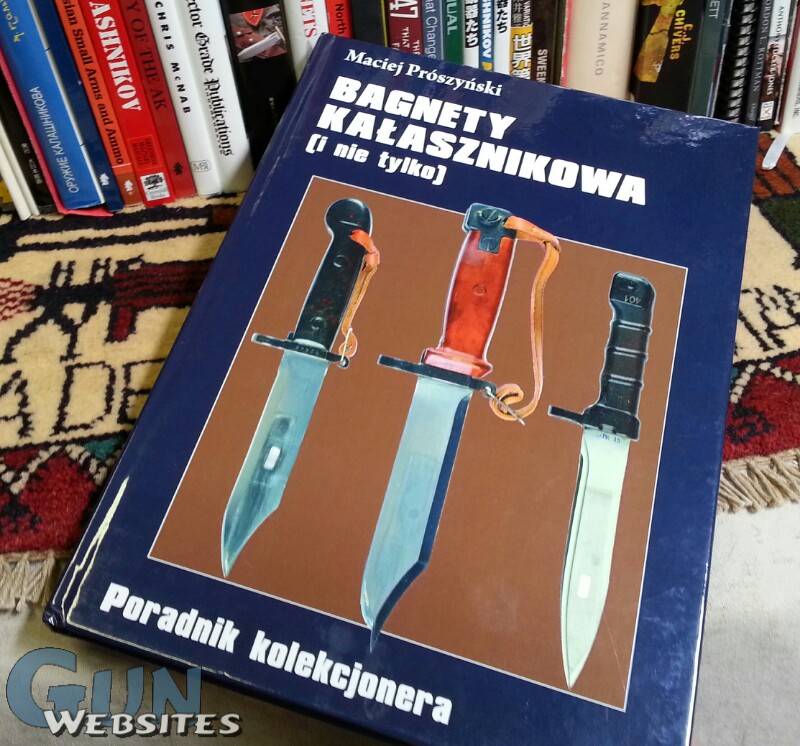

Bagnety Kalasznikowa
Bayonets Kalashnikov
Published: 2013
AUTHOR: MACIEJ PROSZYNSKI
128 Pages
POLISH LANGUAGE
Book dedicated to the Kalashnikov Bayonet

штыки к автоматам калашникова
Kalashnikov Bayonets
Volume 132 page
Russian-language edition
Voronezh, 2012
ISBN 978-5-93737-051-8
Stimost book

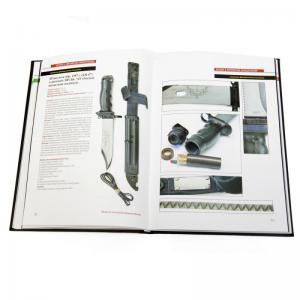

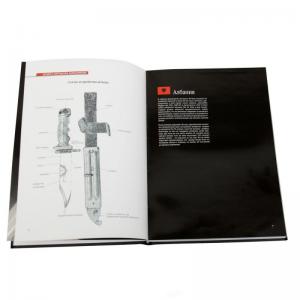

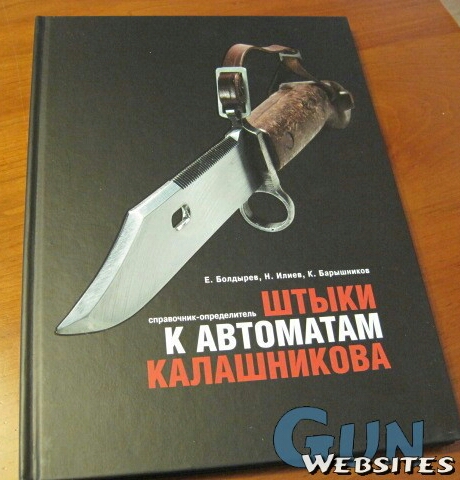
220 * 300 mm
glossy, full color
Only 500 copies made
1990 Russian Ruble
$59.64 US
80 different bayonets, classified by country
The compilers of the book are the recognized experts in the field of antique weapons in general, and in particular bayonets
Eugene Boldyrev (certified Rosokhrankultura Russian expert on antique weapons, the owner of an online store www.zemlyanka-v.ru)
Iliev (the world’s largest collector of bayonets to AK)
Cyril Baryshnikov (the creator and owner of the portal www.bayonet.lv)
original photo taken by a professional photographer A. Kulakov
Today it is the most complete Russian-language edition by bayonets to the AK and its clones, and the most high quality picture book in the world.
BAGNETY DO KARABINKOW SYSTEMU KALASZNIKOWA
BAYONETS FOR KALASHNIKOV FAMILY OF WEAPONS
Gwozdz, Leszek
Text in Polish
Hardbound, 178pp.
1st Edition 2012
Richly illustrated.
Massive reference.

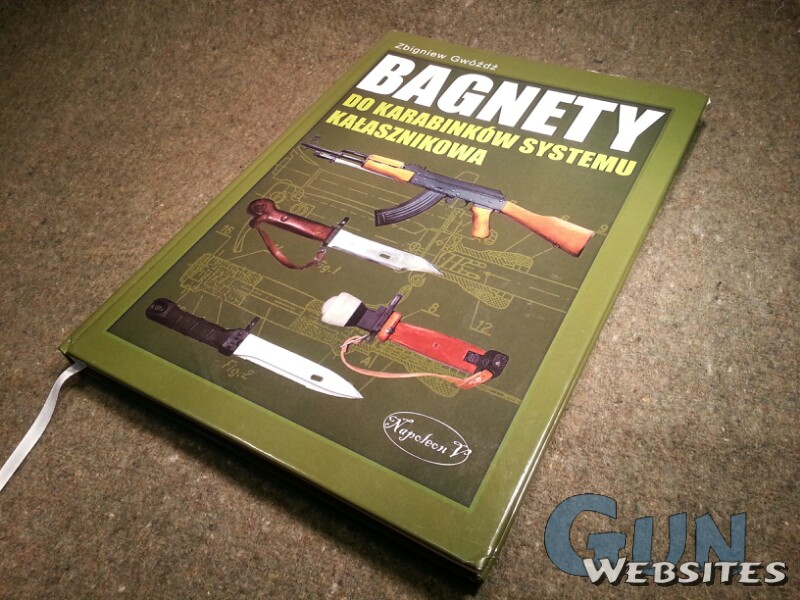

PART I:
Russian bayonets:
56-H-212 bayonet,
6H3 bayonet,
6H4 bayonet,
6H5 bayonet,
collector’s bayonets.
PART II:
Bayonets for AK family of weapons:
Bulgarian bayonets,
Chinese bayonet for AK Type 56,
Chinese commercial copy of 56-H-12 bayonet,
Chinese NMD 65 bayonet,
M75 bayonet,
Egyptian bayonets,
Iraqi bayonet,
Yugoslav M-70 bayonet,
Korean bayonet,
Lithuanian bayonets,
German bayonets,
trainer fencing rifle,
KM-87 knife bayonet,
Polish bayonets: 6H3, 6H4,
Wz. 1985 trainer bayonet,
export bayonets,
decorative bayonets,
prototype bayonet,
rubber trainer replicas,
Romanian bayonets,
Hungarian M1963 bayonet,
Vietnamese bayonet.
PART III:
unlicensed variants of bayonets for AK family of weapons:
Chinese M81 bayonet,
Czech bayonet for “LADA” system rifle
Finnish bayonet for Valmet M-62 rifle
Indian bayonet for INSAS 5,56 rifle
Bayonets for Israeli Galil rifle.
PART IV:
derivatives:
KCB universal bayonets,
US M9 bayonet,
L3A1 bayonet for S.A.80 rifle,
combat knifes
bayonets of the 21st century
manufacturer’s marks
bibliography.
Bodak pro samopal vz. 58
Czech army VZ58 bayonet.
by Zdenek Benes Kid
Sberatel Militaria
Printed in Czech
27 pages
a lot of illustrations
21. x 15 CM
2008
▶ Czech VZ58 Bayonet Book – YouTube
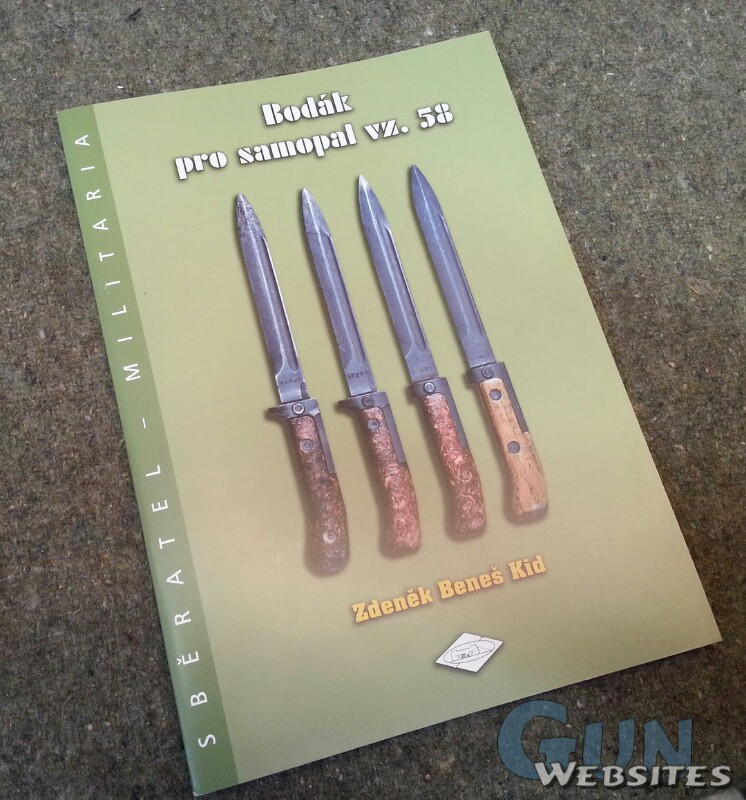
Kalashnikov Bayonets
The Collectors’ Guide to Bayonets for the AK and Its Variations
Martin D. Ivie
Hardcover: 218 pages
Texas Diamond Eye Publications, 2002
ISBN-10: 0972120939
ISBN-13: 978-0972120937
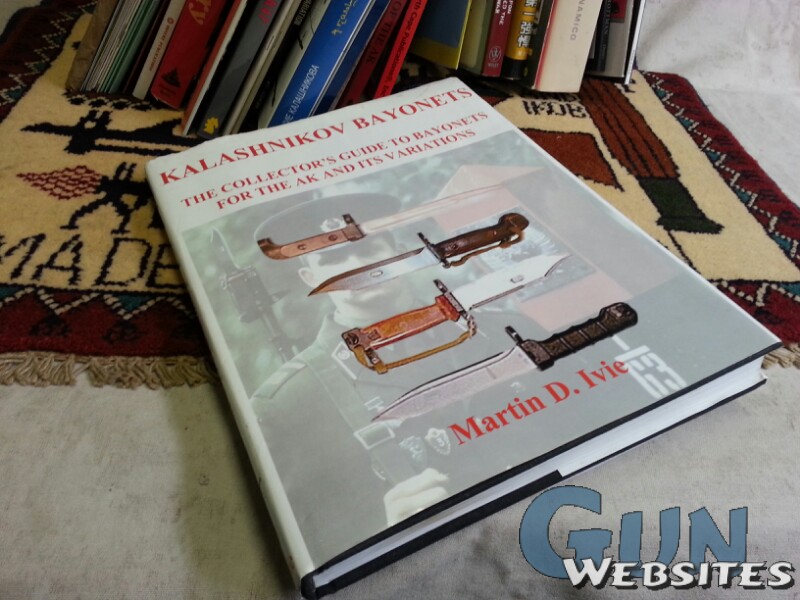
The AK47 and its variants as a group is one of the most prolific combat small arms of the 20th Century. As with most other combat small arms of historical significance, an interest in collecting AK variants and their accessories and accoutrements has developed. One of the main accessories for any combat rifle is the bayonet. This work is intended to aid both the novice and the advanced collector in identifying the various AK bayonet types and their countries of origin…
AK47 Bayonet Book Review
The Collectors’ Guide to Bayonets for the AK and Its Variations
Author: Martin D. Ivie 2002
Kalashnikov Bayonets
An introdution
The AK47 and its variants as a group is one of the most prolific combat small arms of the 20th Century. As with most other combat small arms of historical significance, an interest in collecting AK variants and their accessories and accoutrements has developed. One of the main accessories for any combat rifle is the bayonet. This work is intended to aid both the novice and the advanced collector in identifying the various AK bayonet types and their countries of origin.
The bayonets included in this work range from the variations used for the earliest AK47 type rifles through those used for the latest AK74M and AK100 series rifles and their non-Russian counterparts. They include variations from all of the former Warsaw Pact countries that used the AK as their primary service rifle, as well as those from China, Egypt, Finland, India, Iraq, North Korea and Yugoslavia. Where appropriate, information on bayonets used by client countries is related to the actual country of origin.
Also included are the bayonets for the Czech Vz58 series of rifles. The Vz58 rifles are not truly an AK variant, but many collectors asked that they be included in this work and several provided the source material. The Russian NR-2 and NRS-2 scout knifes have also been included because of their similarities to the later Russian AK bayonets.
Finally, a chapter showing pages of technical drawings from various manuals for
Kalashnikov rifles from a variety of former Warsaw Pact nations has been included. These will aid the collectors with a technical bent in discovering more about the design specifications for the various AK bayonets.
From Page 2 Kalashnikov Bayonets
© 2002 by Martin Ivie
Reprinted with permission of the author
Kalashnikov Bayonet Types
Chapter One
There are four basic knife types found for AK bayonets plus some variations, which do not fall in these categories. There are also three basic scabbard types. Combinations of these types are what allow for identification of the country of origin for these bayonets and the type of AK they were originally used with.
In this book the bayonets have been classified into four basic knife types as follows:
AK47 Type – characterized by ears on the pommel, which go around the barrel of the rifle to aid in mounting; a handle with a scale on each side; and a long, straight spear point type blade with fullers on each side. (See figure 1 .A.)
AKM Type I – characterized by a large bulbous handle of plastic material, which has a slot for a bayonet lug for attachment to the rifle and a hole for a wrist strap and a Bowie type blade with a clip point and sharpened only on one side and without any fullers. (See figure 1.B.)
AKM Type Il/Early AK74 – bayonet lug and a hole for a wrist strap; a solid plastic handLe; and, again, a Bowie type blade with a clip point and sharpened only on one side and without any fullers. (See figure l.C.)
AK74 Type – characterized by a return to a solid plastic handle without a steel pommel but with ridges which substitute for finger grooves; and a return to a spear point blade with a very unique sharpening pattern and again no fullers. (See figure 1 .D.)
The other knife type variations include the East German KM87 bayonet for their AK74 variant, the MpiKM(S)74, the distinctive knives North Koreans used for their late AK47 and AKM type rifles, the bayonets used by the Finns for the Valmet series of rifles, the bayonet used by India for the INSAS Rifle, the Czech CZ58 bayonets and the Chinese Folding Spike and Type 81 bayonets. These will be shown and discussed in the relevant chapters.

From Page 3 Kalashnikov Bayonets
© 2002 by Martin Ivie
Reprinted with permission of the author
Kalashnikov Bayonet Scabbard Variations
Chapter One, cont.
The three scabbard variations have been classified as follows:
AK47 Type – straight steel scabbard with webbing belt loop permanently attached via metal loops welded to the scabbard. (See figure 2.A.)
AKM/AK74 Steel Type — steel scabbard with a wire-cutter attachment riveted to the
lower end, a rubber insulator installed around it at the throat and a belt loop attached to a welded ring via a snap hook or a frog type belt loop. (See figure 2.B.)
AKM / AK74 Plastic Type — plastic scabbard usually with wire-cutter attachment molded in to the lower end; and usually, a belt loop attached to a molded in bar via a snap hook. (See figure 2.C.)
As with the knives, the Valmet, CZ58 and Type 81 types will be discussed in the appropriate chapters.
Another type-classification term used in this book is AKM Type I transitional bayonet.
This is used to refer to the combination of an AKM Type I knife and an AKM/AK74
Plastic Type scabbard.

From Page 4 Kalashnikov Bayonets
© 2002 by Martin Ivie
Reprinted with permission of the author
AK47 Milled Receiver Bayonets
Chapter Two
This chapter covers the bayonets used on the AK47 type milled receiver rifles. Presented are representative bayonets from Russia, Bulgaria, East Germany, Poland, North Korea and China. Also shown is a bayonet currently marketed in the U.S. as being of Romanian origin.
It is the author’s opinion that this last bayonet is actually of Bulgarian origin. This is supported by the comparison to a bayonet of known Bulgarian origin. It is also supported by the fact the Romanians did not produce a domestic version of the milled receiver AK but instead imported them from other East Bloc countries. Therefore, it is likely that any bayonets used with these rifles were also imported and not of domestic origin.
It is also noticeable that there is no Hungarian AK47 bayonet represented. Even though the Hungarians actually made a milled receiver AK47, the author has not been able to find any evidence that they produced an AK47 type bayonet. Here again, it is likely that the Hungarians switched to the stamped receiver AKM production before they began producing bayonets, therefore, any bayonets used by the Hungarians for their AK47s were likely to have been imported.
From Page 5 Kalashnikov Bayonets
© 2002 by Martin Ivie
Reprinted with permission of the author
Russian AK47 Bayonets
Chapter Two, cont.
it is very difficult to tell the difference between Russian and Bulgarian AK47 bayonets. Basically, the only absolute method is to be sure the knife of the bayonet has a Russian factory mark as illustrated in Figure 3. This particular factory mark is for the Izhevsk Machine Works Factory. The factory mark on all examples observed by the author has been in this same location. This bayonet is illustrated in Figure 4. The Russians designate these bayonets the model “56-X-212”.
Figure 3. lzhevsk Arrow in I riangle Factory Mark on AK47 Bayonet

From Page 5 Kalashnikov Bayonets
© 2002 by Martin Ivie
Reprinted with permission of the author
Bulgarian AK47 Bayonets
Chapter Two, cont.
The Bulgarians produced an AK47 type bayonet almost identical to the Russian version. Figure 7 shows an original Bulgarian bayonet as issued. The knife is essentially identical to the early Russian version except it does not have a factory code mark and the serial number runs perpendicular to the axis line of the bayonet and is machine engraved approximately centered in the pommel (see Figure 8). The scales also appear to be redder in color than those on the Russian knife and have less of a mottled appearance.
The scabbard shows more differences from the Russian version than the knife does. It uses the same early pattern wide metal band split in the back to accommodate the hanger and is blued. The scabbard shows a distinct sanding pattern different from the Russian version with approximately the top one-third being sanded in a horizontal pattern and the bottom two-thirds being sanded in a vertical pattern. The drain hole at the tip of the scabbard is also located on the backside whereas the Russian version is on the front side of the scabbard.
Figure 7. Early Bulgarian AK47 Bayonet, Front and Back

From Page 9 Kalashnikov Bayonets
© 2002 by Martin Ivie
Reprinted with permission of the author
East German AK47 Bayonets
Chapter Two, cont.
The East German variation of the AK47 type bayonet is unique in that the scales on the handle of the knife are black plastic rather than some variation of red, reddish brown or brown plastic as found on those from other countries. When serial numbers are present they are pen engraved on the left side of the crosspiece. The East Germans designated this bayonet the “Modell 47”.
The bayonet in Figure 12 is a typical East German AK47 bayonet. The hanger is different than those found on the Russian bayonets in that it is made entirely of web material including the keeper. The hanger color and material vary from white to gray to gray-green to olive green cotton web and has also been observed in light gray nylon web. The belt loop of the hanger is sewn closed rather than riveted. Also, the keeper is sewn to the belt loop and it is closed with a snap rather than a thorn and slot.
Perhaps the most unique part of the East German AK47 type bayonet is the scabbard. The scabbard comes in three distinct variations. All of the variations are blued steel.
Figure 12. Typical East German AK47 Bayonet, Front and Back

From Page 13 Kalashnikov Bayonets
© 2002 by Martin Ivie
Reprinted with permission of the author
Polish AK47 Bayonets
Chapter Two, cont.
The unique scabbard most easily identifies the Polish AK47 bayonet shown in Figure 16. The scabbard has none of the flat stamps and welds near the point like the other AK47 bayonet scabbards shown thus far. There are no hanger attachment bands as seen on the previous scabbards. Instead, there is a small flat piece of metal welded to the back of the scabbard, which holds two very narrow (10 mm wide) thin wire loops in place.
All pieces of the hanger are leather. The belt loop is folded over and held by four rivets. There are two slots in the portion of the belt loop that lies next to the scabbard which two wire loops attached to the back of the scabbard pass through. A narrow tongue is cut between the rivets on the portion of the leather loop on the outside, and this is passed through the wire loops to hold everything in place. The keeper strap is leather and held in place to the belt loop by two rivets. A brass thorn located on the right tab and a slot in the left tab close the keeper. The scabbard appears to be painted black.
Figure 16. Polish AK47 Bayonet, Front and Back

From Page 16 Kalashnikov Bayonets
© 2002 by Martin Ivie
Reprinted with permission of the author
North Korean AK47 Bayonets
Chapter Two, cont.
The North Korean AK47 bayonets (see Figure 18) are the most crudely made of the AK47 bayonets, especially from the swhitedpoint of the scabbard. The knife itself is very typical of the other AK47 bayonets described earlier in this chapter. Like many of them the metal parts that compose the hilt are blued. The scales are bright red plastic material. The knife has a stamped seriaL number on the left side of the pommel, which runs at a 45° similar to that on the Russian bayonets, but does not follow the curve of the pommel like those on the Russian bayonets. There is the remnant of a North Korean star in a circle factory code mark on the lower right hand corner of the left side of the crosspiece (see Figure 19).
Figure 18. North Korean AK47 Bayonet, Front and Back

From Page 18 Kalashnikov Bayonets
© 2002 by Martin Ivie
Reprinted with permission of the author
Chinese AK47 Bayonets
Chapter Two, cont.
The examples of Chinese AK47 bayonets shown in Figures 23 and 24 were both made and sold as U.S. import items. Both knives feature blued steel metal for the parts of the hilts. The scales on both are Chinese Chu wood with those on the knife in Figure 23 being stained dark brown to match the furniture on the Polytech Legend AK47 that the bayonet came with and those on the knife in Figure 24 stained orange brown. The bayonet in Figure 24 is a separate import item made for the U.S. collectors market.
The scabbards on both bayonets are blued metal and are similar to the Early Russian AK47 scabbard. They are slightly narrower than the Russian version (25 mm vs. 26 mm). This is accomplished by eliminating the tensioning spring found in other AK47 bayonet scabbards. Due to this, the rivet for holding the tensioning spring in is noticeably absent. The bands, which attach the hangers, are also made of thinner metal on the Chinese bayonets than on the other AK47 bayonets.
Figure 23. Chinese AK47 Bayonet Sold With Polytech Legend, Front and Back

From Page 21 Kalashnikov Bayonets
© 2002 by Martin Ivie
Reprinted with permission of the author
The Military Knife & Bayonet
Homer M. Brett
Hardcover: 392 pages
Publisher: World PHoto Press; 1st edition (2001)
Language: English
ISBN-10: 4846523012
ISBN-13: 978-4846523015
Alt cover


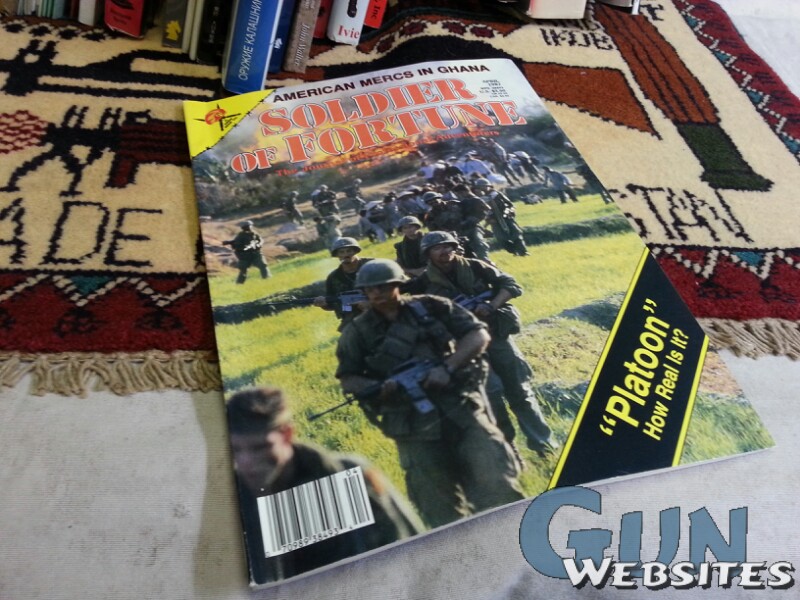

Soldier of Fortune Magazine April 1987 SOF Inspects the Sharp End of the AKM
Color photographs
AKM bayonets are both fascinating and varied. Left to right: Hungarian, Yugoslav, East German, Romanian, Egyptian, Soviet (attached to rifle in the wire-cutting position), PRC black and red) and Polish. In the foreground are Hungarian and Yugoslav fighting knives and another Russian AKM bayonet.